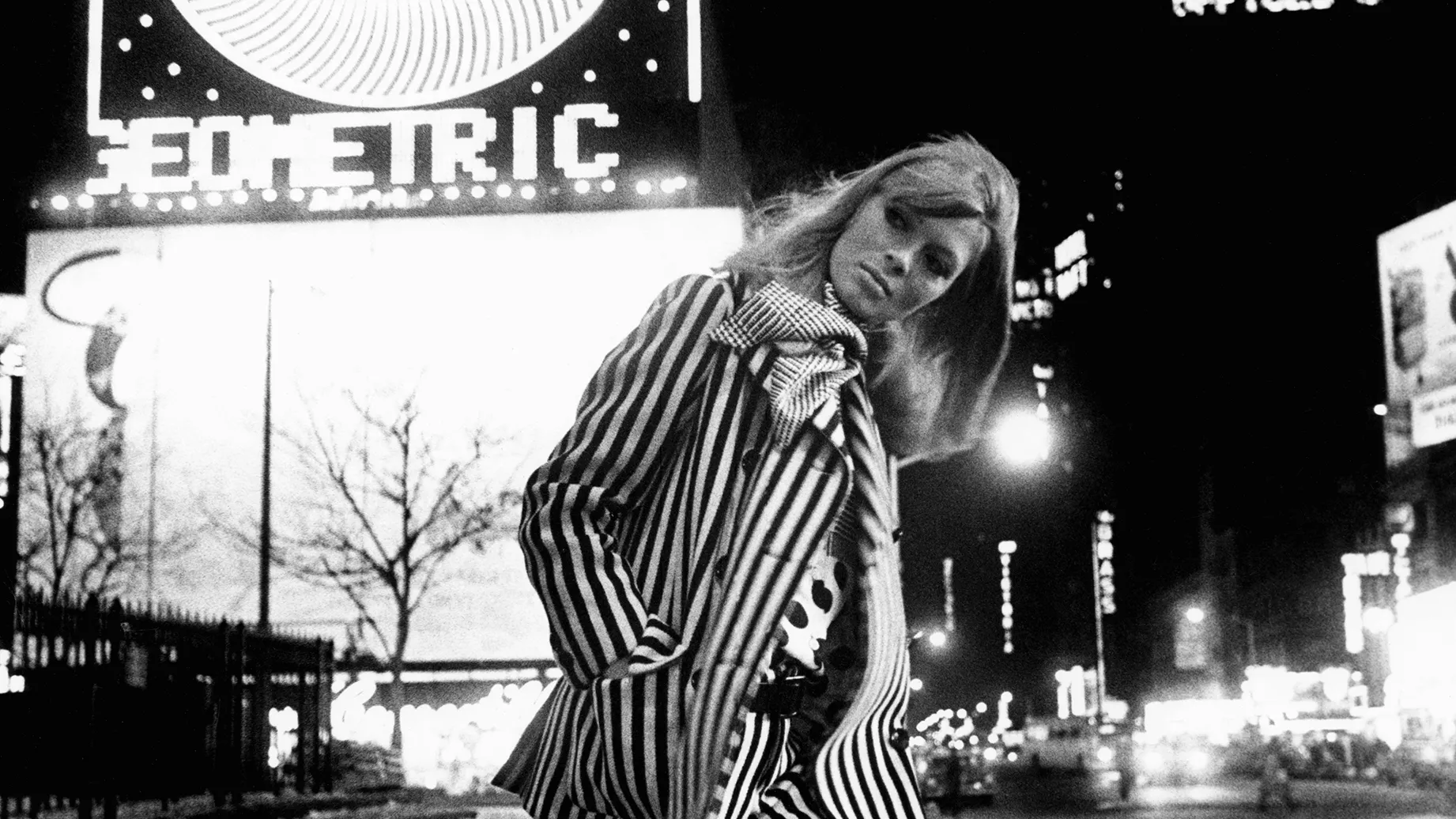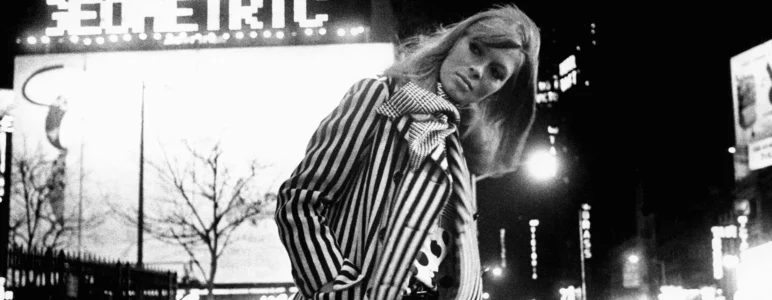In the tumultuous landscape of the 1960s, a musical revolution was brewing beneath the surface of mainstream culture. Against the backdrop of social upheaval and political unrest, a group of artists emerged from the vibrant underground scene of New York City, poised to challenge the status quo and redefine the boundaries of popular music. This eclectic collective, known as The Velvet Underground, would soon embark on a groundbreaking journey that would culminate in the creation of their seminal debut album, The Velvet Underground and Nico.
Formed in 1964 by singer-songwriter Lou Reed and multi-instrumentalist John Cale, The Velvet Underground quickly established themselves as pioneers of the avant-garde movement, drawing inspiration from a diverse array of influences ranging from literature and film to experimental music and underground culture. With the addition of guitarist Sterling Morrison, drummer Maureen Tucker, and the enigmatic chanteuse Nico, the band’s lineup was solidified, setting the stage for a creative collaboration that would defy conventions and challenge the very notion of what constituted “popular” music.
Recorded in 1966 and released the following year, The Velvet Underground and Nico marked a radical departure from the prevailing trends of the time, eschewing the sunny optimism of the burgeoning hippie movement in favor of a darker, more introspective sound. Produced by the legendary Andy Warhol and featuring his iconic banana artwork adorning the album’s cover, the record was met with bewilderment and indifference upon its release, failing to achieve commercial success but leaving an indelible mark on the cultural landscape.

What Inspired the Album
The Velvet Underground and Nico was born from the convergence of diverse influences, both personal and cultural, that shaped the creative vision of its enigmatic creators. At the heart of the album’s inspiration lies the vibrant underground scene of New York City in the 1960s, a melting pot of artistic experimentation and countercultural fervor that provided fertile ground for the emergence of new ideas and voices.
Lou Reed, the band’s principal songwriter and visionary, drew inspiration from his own experiences growing up in the gritty streets of Brooklyn. Influenced by the work of beat poets like Allen Ginsberg and William S. Burroughs, Reed sought to capture the raw energy and existential angst of urban life with unflinching honesty and poetic lyricism. His songs serve as vivid snapshots of city life, populated by hustlers, junkies, and lost souls searching for meaning in a world gone mad.
John Cale, whose avant-garde sensibilities and classical training imbued the band’s sound with a sense of daring experimentation, brought a wealth of musical influences to the table. From his early studies in avant-garde composition to his collaborations with artists like La Monte Young and John Cage, Cale’s eclectic tastes and restless intellect helped to shape the band’s sonic identity, pushing the boundaries of conventional songwriting and paving the way for a new era of musical innovation.
The addition of Nico, the enigmatic German model and chanteuse, added another dimension to the band’s sound, infusing it with an air of mysterious allure and ethereal beauty. Her haunting vocals and enigmatic presence lent a sense of otherworldly mystique to tracks like “Femme Fatale” and “All Tomorrow’s Parties,” providing a stark contrast to Reed’s streetwise swagger and Cale’s avant-garde experimentation.
In addition to their personal experiences and influences, The Velvet Underground drew inspiration from a wide range of cultural touchstones, including literature, film, and visual art. From the surreal landscapes of Salvador Dalí to the existential musings of Jean-Paul Sartre, the band’s lyrics and imagery were infused with a sense of intellectual curiosity and artistic ambition that set them apart from their peers.
Ultimately, The Velvet Underground and Nico stands as a testament to the transformative power of artistic collaboration and creative expression. From its inception amidst the vibrant energy of New York City’s underground scene to its enduring legacy as a landmark work of avant-garde artistry, the album continues to inspire and captivate listeners with its fearless innovation and unapologetic authenticity. As we delve deeper into the enigmatic world of The Velvet Underground, let us be reminded of the boundless potential of music to transcend boundaries and to illuminate the hidden depths of the human soul.
Key Themes
At its core, The Velvet Underground and Nico serves as a haunting meditation on the complexities of the human experience, exploring themes of alienation, addiction, and existential angst with unflinching honesty and raw emotional intensity. From the gritty realism of tracks like “I’m Waiting for the Man” and “Heroin” to the ethereal beauty of “Femme Fatale” and “All Tomorrow’s Parties,” the album offers a kaleidoscopic glimpse into the myriad facets of urban life, weaving a tapestry of sound that is as evocative as it is enigmatic.
One of the album’s central themes is the notion of transformation, both on a personal and societal level. Throughout the record, characters grapple with their own desires and insecurities, seeking refuge in drugs, sex, and escapism as a means of coping with the harsh realities of existence. This theme is perhaps most poignantly captured in the track “Sunday Morning,” which juxtaposes moments of quiet introspection with bursts of chaotic noise, reflecting the fragile balance between serenity and chaos that defines the human condition.
Another recurring motif in The Velvet Underground and Nico is the concept of duality, as embodied by the album’s titular characters. On one hand, there is the raw energy and streetwise swagger of Lou Reed, whose lyrics paint vivid portraits of urban life with a brutal yet poetic realism. On the other, there is the ethereal presence of Nico, whose haunting vocals lend an air of otherworldly mystique to the album’s darker moments. Together, these two forces collide and coalesce, creating a rich tapestry of sound that is as mesmerizing as it is unsettling.
In essence, The Velvet Underground and Nico stands as a testament to the power of artistic expression to transcend boundaries and defy expectations. From its humble beginnings in the underground clubs of New York City to its enduring legacy as a landmark work of avant-garde artistry, the album continues to captivate and inspire listeners with its fearless innovation and unapologetic authenticity. As we embark on a journey through the heart of urban decay, let us be reminded of the transformative power of music to illuminate the darkest corners of the human soul and to forge connections that transcend time and space.

The Velvet Underground and Nico
- Sunday Morning: A tranquil opening belies the album’s darker undertones, drawing listeners into a dreamlike reverie before plunging into the depths of urban decay.
- I’m Waiting for the Man: A gritty portrayal of addiction and desperation, this track captures the relentless pursuit of escape amidst the harsh realities of city life.
- Femme Fatale: Nico’s haunting vocals lend an air of ethereal allure to this mesmerizing track, exploring themes of seduction and betrayal with hypnotic grace.
- Venus in Furs: A dark, brooding masterpiece, this track delves into the depths of desire and submission, evoking a sense of primal ecstasy amidst a backdrop of discordant drones.
- Run Run Run: A frenetic burst of energy, this track pulses with the restless urgency of urban life, capturing the thrill of rebellion and defiance against societal norms.
- All Tomorrow’s Parties: Nico’s enigmatic presence takes center stage once more in this haunting ballad, offering a poignant meditation on the fleeting nature of youth and beauty.
- Heroin: A visceral exploration of addiction and self-destruction, this track confronts the listener with the harrowing realities of substance abuse, culminating in a cacophonous climax of despair.
- There She Goes Again: A playful yet subversive homage to the allure of female seduction, this track juxtaposes catchy melodies with lyrical irony, inviting listeners to ponder the complexities of desire.
- I’ll Be Your Mirror: Nico’s delicate vocals imbue this track with a sense of tender vulnerability, offering a bittersweet reflection on love and self-perception amidst the chaos of modern life.
- The Black Angel’s Death Song: A cacophony of dissonance and discord, this track pushes the boundaries of conventional songwriting, challenging listeners to confront the darker recesses of the human psyche.
- European Son: A frenzied cacophony of sound and fury, this epic finale serves as a sonic manifesto of the album’s avant-garde ethos, pushing the boundaries of sonic experimentation to exhilarating new heights.
Significant Reviews
The Velvet Underground and Nico garnered a mixed reception upon its initial release, with many critics baffled by its unconventional sound and provocative subject matter. However, over time, the album has come to be recognized as a pioneering work of art, influencing generations of musicians and artists with its fearless experimentation and uncompromising vision. Rolling Stone hailed it as one of the greatest albums of all time, praising its fearless innovation and enduring influence on the course of popular music.
List of Similar Albums
For listeners captivated by the daring soundscapes and unflinching honesty of The Velvet Underground and Nico, there exists a wealth of albums that similarly push the boundaries of conventional music and delve into the complexities of the human experience. Some noteworthy recommendations include:
- “Marquee Moon” by Television: A landmark album in the post-punk genre, Marquee Moon channels the raw energy and experimental fervor of The Velvet Underground and Nico into a hypnotic whirlwind of angular riffs and poetic lyricism.
- “Unknown Pleasures” by Joy Division: Haunting and atmospheric, Unknown Pleasures offers a bleak yet mesmerizing glimpse into the depths of existential despair, echoing the existential angst and urban decay explored in The Velvet Underground and Nico.
- “White Light/White Heat” by The Velvet Underground: A sonic assault of blistering noise and avant-garde experimentation, White Light/White Heat stands as a raw and unfiltered companion piece to The Velvet Underground and Nico, pushing the boundaries of sonic innovation to exhilarating new heights.
In essence, The Velvet Underground and Nico stands as a timeless masterpiece of avant-garde artistry, challenging conventions and defying categorization with its raw energy and unflinching honesty. From its inception amidst the gritty streets of New York City to its enduring influence on generations of musicians and artists, this album continues to captivate and inspire with its haunting beauty and fearless innovation.

